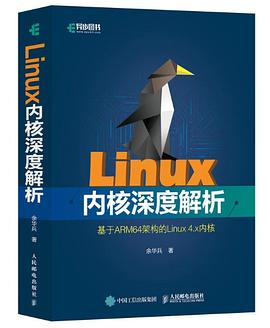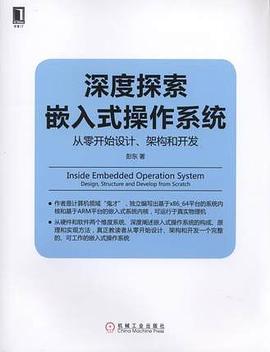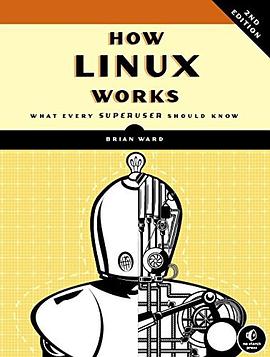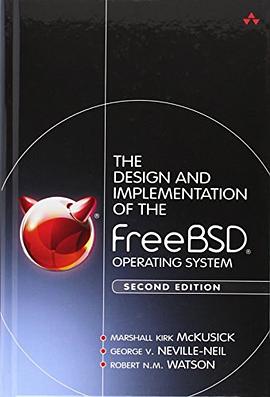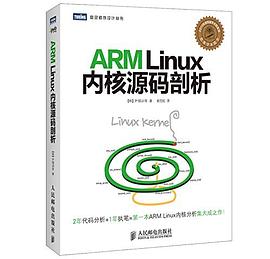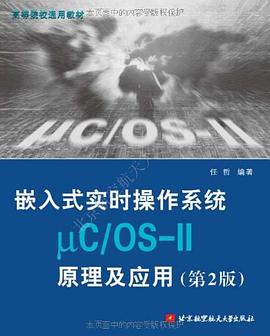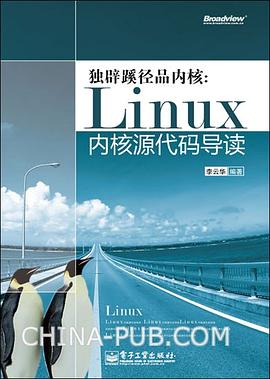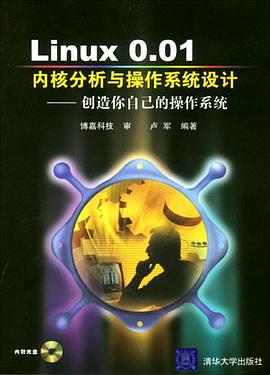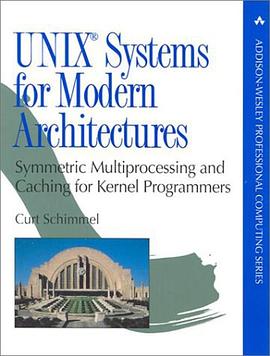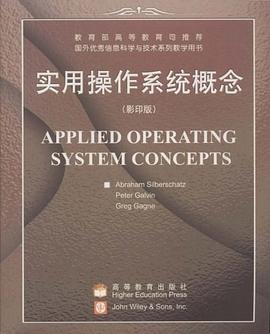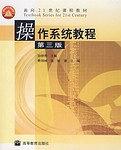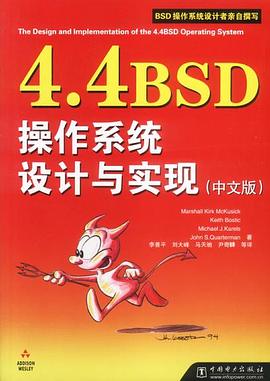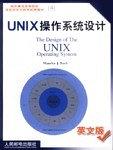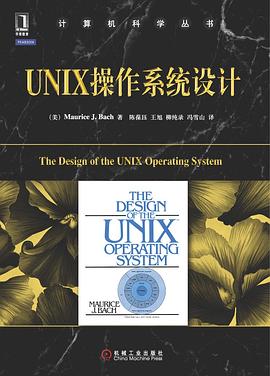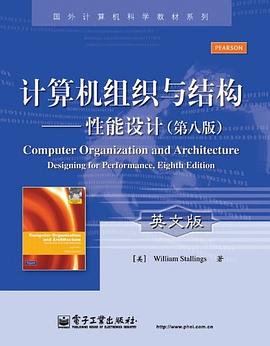

具体描述
《国外计算机科学教材系列•计算机组织与结构:性能设计(第8版)(英文版)》以Intel x86系列通用处理器和ARM系列嵌入式处理器作为主要考察实例,将当代计算机系统性能设计问题和计算机组织与结构的基本概念及原理紧密联系。首先介绍计算机的发展与演变,引入性能评价和性能设计的概念,然后以自顶而下的方式逐层展开介绍计算机系统、存储器体系结构、I/O及互连、计算机算术、指令集体系结构的设计及其实现技术、控制器设计,最后还介绍了处理器的各种并行组织技术。
作者简介
目录信息
0.1 Outline of the Book
0.2 A Roadmap for Readers and Instructors
0.3 Why Study Computer Organization and Architecture
0.4 Internet and Web Resources
PART ONE OVERVIEW
Chapter 1 Introduction
1.1 Organization and Architecture
1.2 Structure and Function
1.3 Key Terms and Review Questions
Chapter 2 Computer Evolution and Performance
2.1 A Brief History of Computers
2.2 Designing for Performance
2.3 The Evolution of the Intel x86 Architecture
2.4 Embedded Systems and the ARM
2.5 Performance Assessment
2.6 Recommended Reading and Web Sites
2.7 Key Terms, Review Questions, and Problems
PART TWO THE COMPUTER SYSTEM
Chapter 3 A Top-Level View of Computer Function and Interconnection
3.1 Computer Components
3.2 Computer Function
3.3 Interconnection Structures
3.4 Bus Interconnection
3.5 PCI
3.6 Recommended Reading and Web Sites
3.7 Key Terms, Review Questions, and Problems
Appendix A Timing Diagrams
Chapter 4 Cache Memory
4.1 Computer Memory System Overview
4.2 Cache Memory Principles
4.3 Elements of Cache Design
4.4 Pentium Cache Organization
4.5 ARM Cache Organization
4.6 Recommended Reading
4.7 Key Terms, Review Questions, and Problems
Appendix A Performance Characteristics of Two-Level Memories
Chapter 5 Internal Memory Technology
5.1 Semiconductor Main Memory
5.2 Error Correction
5.3 Advanced DRAM Organization
5.4 Recommended Reading and Web Sites
5.5 Key Terms, Review Questions, and Problems
Chapter 6 External Memory
6.1 Magnetic Disk
6.2 RAID
6.3 Optical Memory
6.4 Magnetic Tape
6.5 Recommended Reading and Web Sites
6.6 Key Terms, Review Questions, and Problems
Chapter 7 Input/Output
7.1 External Devices
7.2 I/O Modules 2
7.3 Programmed I/O
7.4 Interrupt-Driven I/O 8
7.5 Direct Memory Access
7.6 I/O Channels and Processors
7.7 The External Interface: FireWire and Infiniband
7.8 Recommended Reading and Web Sites
7.9 Key Terms, Review Questions, and Problems
Chapter 8 Operating System Support
8.1 Operating System Overview
8.2 Scheduling
8.3 Memory Management
8.4 Pentium Memory Management
8.5 ARM Memory Management
8.6 Recommended Reading and Web Sites
8.7 Key Terms, Review Questions, and Problems
PART THREE THE CENTRAL PROCESSING UNIT
Chapter 9 Computer Arithmetic
9.1 The Arithmetic and Logic Unit (ALU)
9.2 Integer Representation
9.3 Integer Arithmetic
9.4 Floating-Point Representation
9.5 Floating-Point Arithmetic
9.6 Recommended Reading and Web Sites
9.7 Key Terms, Review Questions, and Problems
Chapter 10 Instruction Sets: Characteristics and Functions
10.1 Machine Instruction Characteristics
10.2 Types of Operands
10.3 Intel x86 and ARM Data Types
10.4 Types of Operations
10.5 Intel x86 and ARM Operation Types
10.6 Recommended Reading
10.7 Key Terms, Review Questions, and Problems
Appendix A Stacks
Appendix B Little, Big, and Bi-Endian
Chapter 11 Instruction Sets: Addressing Modes and Formats
11.1 Addressing
11.2 x86 and ARM Addressing Modes
11.3 Instruction Formats
11.4 x86 and ARM Instruction Formats
11.5 Assembly Language
11.6 Recommended Reading
11.7 Key Terms, Review Questions, and Problems
Chapter 12 Processor Structure and Function
12.1 Processor Organization
12.2 Register Organization
12.3 The Instruction Cycle
12.4 Instruction Pipelining
12.5 The x86 Processor Family
12.6 The ARM Processor
12.7 Recommended Reading
12.8 Key Terms, Review Questions, and Problems
Chapter 13 Reduced Instruction Set Computers (RISCs)
13.1 Instruction Execution Characteristics
13.2 The Use of a Large Register File
13.3 Compiler-Based Register Optimization
13.4 Reduced Instruction Set Architecture
13.5 RISC Pipelining
13.6 MIPS R4000
13.7 SPARC
13.8 The RISC versus CISC Controversy
· · · · · · (收起)
读后感
评论标题写的好像这本书很差的样子,其实也不是。货比货得扔,是说斯老师这书要是和CSAPP或者“亨尼希/帕特森”一比就能看出差距来。有些需要讲得透而又透的基础知识,没有讲够。比如数的表示、流水线等等。原理结合实际的部分,比如x86和arm,也是浮光掠影,只能了解个粗略的...
评分对计算机底层的组成有了概念上的了解,书里面配有大量的图,可以帮助读者理解。 以下是一些感想: 电子计算机包括数据存储、数据处理、数据传输和控制功能。 最基本的元器件是门和存储器位元。 集成电路的发明是具有突破性的。 计算机变快的方式从一开始的提高主频,到有更高效...
评分对计算机底层的组成有了概念上的了解,书里面配有大量的图,可以帮助读者理解。 以下是一些感想: 电子计算机包括数据存储、数据处理、数据传输和控制功能。 最基本的元器件是门和存储器位元。 集成电路的发明是具有突破性的。 计算机变快的方式从一开始的提高主频,到有更高效...
评分评论标题写的好像这本书很差的样子,其实也不是。货比货得扔,是说斯老师这书要是和CSAPP或者“亨尼希/帕特森”一比就能看出差距来。有些需要讲得透而又透的基础知识,没有讲够。比如数的表示、流水线等等。原理结合实际的部分,比如x86和arm,也是浮光掠影,只能了解个粗略的...
评分对计算机底层的组成有了概念上的了解,书里面配有大量的图,可以帮助读者理解。 以下是一些感想: 电子计算机包括数据存储、数据处理、数据传输和控制功能。 最基本的元器件是门和存储器位元。 集成电路的发明是具有突破性的。 计算机变快的方式从一开始的提高主频,到有更高效...
用户评价
Part 2介绍了外设,篇幅较长。Part 3介绍了CPU的指令结构,在Part 4中介绍了中央控制单元,但这里的内容似乎很陈旧。不过里面还有相关内容的推荐书目,可以参看。
评分标记一下,以资鼓励……虽然读得很水,但也是第一次读完这么厚的技术书……书么,还是不错的,关键是老师很萌……等假期回去看看其它的书再做评价吧~
评分Part 2介绍了外设,篇幅较长。Part 3介绍了CPU的指令结构,在Part 4中介绍了中央控制单元,但这里的内容似乎很陈旧。不过里面还有相关内容的推荐书目,可以参看。
评分标记一下,以资鼓励……虽然读得很水,但也是第一次读完这么厚的技术书……书么,还是不错的,关键是老师很萌……等假期回去看看其它的书再做评价吧~
评分Part 2介绍了外设,篇幅较长。Part 3介绍了CPU的指令结构,在Part 4中介绍了中央控制单元,但这里的内容似乎很陈旧。不过里面还有相关内容的推荐书目,可以参看。
相关图书
本站所有内容均为互联网搜索引擎提供的公开搜索信息,本站不存储任何数据与内容,任何内容与数据均与本站无关,如有需要请联系相关搜索引擎包括但不限于百度,google,bing,sogou 等
© 2025 book.quotespace.org All Rights Reserved. 小美书屋 版权所有


